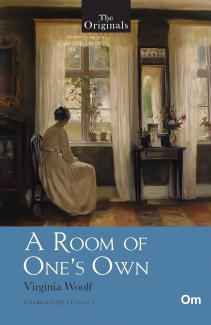THE ORIGINALS A ROOM OF ONES OWN
Born on 25 January 1882, Virginia Woolf was one of the most influential modernist 20th-century English writers, notable for using stream of consciousness as a literary technique in her works. While writing anonymous reviews for journals, she resolved to 're-form' the novel by experimenting with dreams and delirium. Her novel Melymbrosia, which she completed in 1912 was born out of this determination. Recast and published in 1915 as The Voyage Out, it was about a young woman's journey of selfdiscovery on her father's ship in South America. Later, she modelled many of her characters on real-life associates and acquaintances. At the onset of 1924, the Woolfs moved their residence from the suburbs back to Bloomsbury, where a relationship blossomed between the aristocratic Vita Sackville-West and Virginia. With Sackville-West, she learned to face her anxieties and overcome her nervous ailments. In fact, Orlando, a fantastical biography is partly a portrait of Vita Sackville-West. One of the most important chapters in her early life was the summer home the family visited in St Ives, Cornwall, where she first beheld the Godrevy Lighthouse. To the Lighthouse (1927) is, therefore, considered one of her most autobiographical novels. Apart from her extremely popular extended essay, 'A Room of One's Own' (1929), her other seminal works include-Mrs Dalloway (1925), Orlando (1928) and The Waves (1931). In 1941, Virginia Woolf drowned herself in a river, aged 59. Her last work, Between the Acts, was posthumously published later that year. ... Read more Read less
A woman must have money and a room of her own if she is to write fiction. A Room of One’s Own, among Virginia Woolf’s best- known works, is an extended essay, based on two lectures that she delivered in October 1928 at Newnham College and Girton College, women’s constituent colleges at the University of Cambridge. First published in September 1929 as a book, this seminal feminist text makes a case for a literal and figurative space for women writers within a literary tradition dominated by men. Woolf feels strongly that the argument that women produce inferior works of literature must be analysed against the backdrop of their existence and circumstances—unlike men, historically and socially, women are denied the time, space and economic independence to produce artistic and creative works. Nearly a century after the publication of A Room of One’s Own, Virginia Woolf’s observation still seems to ring true. ... Read more Read less











